#FeedbackLoop
Explore tagged Tumblr posts
Text
hello kitty x1
#glitch#glitch art#databending#crt#crt tv#crtart#analog#crtglitch#videoart#videosynthesis#videobending#videosynthesizer#videoglitch#hellokitty#hk#analog glitch#analogvideoart#analogart#feedbackloop
3 notes
·
View notes
Text
youtube
🔍 Seeking to improve your feedback loop? Discover the power of AI📊 with SalezRobot! Our AI-based survey forms are designed to help you gather insightful feedback efficiently. Enhance your customer relationship management and make data-driven decisions with ease. Perfect for YouTube creators looking to understand their audience better. 🌟
#Salezrobot#AIFeedback#SurveyForm#CRMsoftware#YouTubeGrowth#CustomerFeedback#DataDriven#AItools#FeedbackLoop#CustomerSatisfaction#TechInnovation#MarketingTools#Youtube
0 notes
Text
Want to add a personal touch to your forms? Check out our short tutorial on incorporating your company logo into RapidoForm! It’s an easy way to enhance your forms and showcase your brand with a professional finish. Give it a go and let your brand stand out!🙌
#feedbackforms#surveycreation#customerinsights#formtips#businessgrowth#productdevelopment#marketingstrategies#smallbusinessowners#entrepreneurs#digitalmarketers#customerfeedback#surveyquestions#businessstrategy#formdesign#marketresearch#dataanalysis#clientfeedback#surveyresults#branddevelopment#businesssuccess#marketingtips#feedbackloop#userexperience#surveytools#customerexperience#surveybestpractices#feedbackcollection#businessconsulting#formanalytics#markettrends
0 notes
Text
Embrace true agility by letting go of rigid plans and focusing on vision, humility, and continuous learning. Is your company truly agile or just following a fixed plan?

Want to stick to your project plan? Then agile methods might not be for you. 🤔
Agility is all about embracing change. If change drives your costs, you need to be as agile as possible. But are we truly prepared for change?
Can we handle scrapping our project plan? Can we accept being wrong? Can we cope with not delivering all the features we originally planned?
Why do so many companies spend enormous amounts of time and money to "become agile" when:
🤨 They never adapt their plan during a Sprint Review or System Demo? 🤨 They don’t listen to feedback, but just "demo the current project state"? 🤨 They stick rigidly to their plan without embracing the agile mindset?
If you really want to embrace agility, let go of the fixed upfront project plan. Instead, focus on:
👉 A clear vision and product goal, not detailed features 👉 Humility about your ideas, knowing you’ll often be wrong 👉 A passion for learning and gathering feedback to refine your plan
Does your company rigidly follow a fixed plan and try to "implement it agile"?
#Vabro#Scrum#AgileMindset#ProjectManagement#EmbraceChange#AgileTransformation#SprintReview#SystemDemo#ProjectPlanning#FeedbackLoop#ContinuousImprovement#AgileJourney#BusinessAgility#ProductGoals#LearnAndAdapt#AgilePrinciples#FlexiblePlanning#AgileImplementation
0 notes
Text
Elevate Your IIT JEE Preparation with SanjeevRathore Coaching in Kanpur
IIT JEE Coaching In Kanpur

Personalized Approach: SanjeevRathore Coaching understands that each student is unique with their strengths and weaknesses. Hence, they adopt a personalized approach to coaching. They assess the student’s capabilities and craft a customized study plan tailored to their individual needs. This personalized attention ensures that students receive the guidance they require to excel in their preparation.
Experienced Faculty: At SanjeevRathore, the faculty consists of seasoned educators who possess a profound understanding of the IIT JEE Coaching In Kanpur syllabus and examination pattern. With years of experience under their belt, they are adept at simplifying complex concepts, making them more accessible to students. The faculty members act as mentors, providing constant support and motivation to help students navigate through challenging topics with ease.
Comprehensive Study Material: SanjeevRathore Coaching provides students with meticulously curated study material that covers the entire spectrum of the IIT JEE syllabus. The study material is designed to foster a deep understanding of fundamental concepts while also providing ample practice opportunities through exercises and mock tests. Additionally, the material is regularly updated to align with the latest trends and developments in the field of IIT JEE Coaching In Kanpur.
State-of-the-art Infrastructure: Creating an environment conducive to learning is paramount at SanjeevRathore Coaching. The institute boasts state-of-the-art infrastructure equipped with modern amenities and facilities. Spacious classrooms, well-stocked libraries, and technologically advanced laboratories create an enriching learning environment where students can thrive academically.
Focus on Conceptual Clarity: SanjeevRathore IIT JEE Coaching In Kanpur emphasizes conceptual clarity above rote memorization. They believe in equipping students with a strong foundation in core concepts, which serves as a solid framework for tackling even the most challenging problems. Through interactive sessions, brainstorming exercises, and concept-building workshops, students develop a deeper understanding of subjects, enabling them to approach problems analytically.
Regular Assessment and Feedback: To track the progress of students and identify areas that require improvement, SanjeevRathore Coaching conducts regular assessments and mock tests. These assessments simulate the actual exam environment, helping students familiarize themselves with the exam pattern and time management techniques. Moreover, detailed feedback provided by experienced faculty members enables students to pinpoint their weaknesses and work on them effectively.
Holistic Development: SanjeevRathore believes in nurturing not just academic excellence but also holistic development. Along with rigorous academic training, students are encouraged to participate in extracurricular activities, competitions, and workshops. This holistic approach ensures that students develop essential life skills such as critical thinking, problem-solving, and communication, which are invaluable assets in their academic and professional journey.
Conclusion: In the competitive landscape of IIT JEE Coaching In Kanpur, SanjeevRathore Coaching stands out as a beacon of excellence in Kanpur. With its personalized approach, experienced faculty, comprehensive study material, and focus on conceptual clarity, SanjeevRathore Coaching equips students with the tools they need to ace the IIT JEE exams with confidence. Enroll with SanjeevRathore Coaching today and take the first step towards a successful career in engineering.
#SanjeevRathoreIITJEE#KanpurCoaching#IITJEEPreparation#PersonalizedLearning#ExperiencedFaculty#ConceptualClarity#HolisticDevelopment#StateOfTheArtInfrastructure#MockTests#FeedbackLoop
0 notes
Text
Mastering Feedback: The Key Components for Growth
Unlock success with feedback! Discover its key components: Timeliness, Accuracy, and Actionability. Elevate performance and growth!

#FeedbackMastery#PerformanceImprovement#TimelyFeedback#AccurateInsights#ActionableTips#ProfessionalDevelopment#FeedbackCulture#GrowWithFeedback#EffectiveCommunication#ConstructiveFeedback#FeedbackLoop#LearningAndGrowth#FeedbackIsKey#ContinuousImprovement#CareerAdvancement#PersonalGrowth#EnhanceSkills#FeedbackStrategy#FeedbackGoals#SuccessMindset#DevelopmentJourney#FeedbackTraining#SkillsImprovement#FeedbackSession#GrowthPotential
1 note
·
View note
Text
Learn how to keep customers engaged with feedback and rewards. Discover the art of gathering feedback effectively and turning customers into brand advocates through tailored reward systems. Elevate your customer engagement game with insightful tips and strategies. Start by creating an LBN business profile for increased visibility and customer interaction. Click to find out more!
#CustomerEngagement#FeedbackLoop#BrandAdvocates#RewardsProgram#SmallBusinessTips#CustomerExperience#LoyaltyRewards#DigitalMarketing#OnlinePresence#LocalBizNetwork#BusinessDirectory#CustomerFeedback#BrandLoyalty#EngagementStrategy#MarketingTips
1 note
·
View note
Text

Navigate the digital landscape with confidence using our 10 strategies for email success. 🌐📬
#EmailMastery#EngagingContent#DigitalMessagingPro#InboxSuccess#EmailStrategyTips#CuriousSubjectLines#MobileFriendlyEmails#SegmentedOutreach#A/BTestingWins#MetricsMatter#ValueDrivenEmails#SmallBizEmails#PersonalizedMessaging#CTAEffectiveness#TimingIsKey#FeedbackLoop#VisualAppeal#ContentPrecision#EmailOptimization#SegmentationSuccess#SmarterEmails
0 notes
Text
Fostering Emotional Intelligence in Developers: The Agile Advantage Over Waterfall Methodology
In the fast-paced world of software development, the choice of project management methodology can significantly impact not only the efficiency of the team but also the emotional intelligence of individual developers. The shift from traditional waterfall methods to Agile frameworks has brought about a paradigm change, emphasizing collaboration, adaptability, and continuous improvement. This shift has proven to enhance emotional intelligence among developers compared to the rigid structures of the waterfall approach.
1. Collaboration and Communication: Agile’s Cornerstone
One of the key elements of emotional intelligence is effective communication and collaboration. Agile methodologies prioritize these aspects by fostering regular and open communication within the team. Unlike the waterfall model, where communication is often restricted to predefined phases, Agile encourages constant interaction through methods like daily stand-ups, sprint reviews, and retrospectives. This consistent communication not only ensures that everyone is on the same page but also creates a collaborative environment where developers can share ideas, concerns, and feedback freely.
2. Empathy in Action: Agile’s Iterative Nature
Agile's iterative and incremental approach enables teams to respond to change quickly. This flexibility reduces the stress associated with fixed plans and deadlines, fostering empathy among team members. Developers working in Agile environments understand that changes are inevitable, and this mindset encourages a supportive atmosphere where colleagues are more likely to empathize with each other’s challenges. Waterfall's rigid structure, on the other hand, can lead to frustration and burnout when unexpected issues arise late in the development process.
3. Effective Feedback for Growth: Agile’s Continuous Improvement
Emotional intelligence involves the ability to receive and provide constructive feedback. Agile methodologies incorporate regular feedback loops through mechanisms like sprint reviews and retrospectives. This continuous improvement aspect not only enhances the quality of the product but also provides developers with opportunities to learn and grow. In a waterfall model, feedback typically comes at the end of the project, making it less effective for individual development and improvement.
4. Adaptability as a Stress Reducer: Agile’s Flexible Approach
Agile's adaptability to changing requirements contributes to stress reduction within the development team. Developers no longer need to fear that a single change will disrupt the entire project, as Agile allows for adjustments during the development process. This reduced stress not only positively impacts the emotional well-being of developers but also leads to a more resilient and responsive team.
Conclusion: Agile as a Catalyst for Emotional Intelligence
In conclusion, the Agile framework, with its emphasis on collaboration, empathy, effective feedback, and adaptability, serves as a catalyst for enhancing the emotional intelligence of developers. The iterative nature of Agile methodologies promotes a culture of continuous improvement and open communication, contributing to a positive and supportive team environment. While the waterfall method has its merits, the dynamic and people-centric approach of Agile has proven to be a transformative force in cultivating emotional intelligence within software development teams.
#sandhayati#AgileEmotions#DevEQ#AgileMindset#CollaborativeCoding#EmotionalIntelligenceInTech#AgileCulture#FeedbackLoop#TeamResilience#IterativeIQ#AdaptiveDev#ContinuousImprovement#WaterfallVsAgile#TechTeamEmpathy#AgileCommunication#DeveloperWellBeing
0 notes
Text
What steps did you take to validate your business model before you launched your business?
🚀 Launching a Business? Validate Your Model First! 🌟
Starting a business is an exciting adventure, but have you ever wondered how entrepreneurs ensure their business model is rock-solid before taking the plunge? I certainly did. 😅
When I was on the verge of launching my business, I was at a crossroads. I had a vision, but was it viable? 🤔
Here are the steps I took to validate my business model:
Market Research: I delved deep into market research to understand the demand for my product or service. It's like peeking into the crystal ball of your business's future. 🔮
Prototype Testing: I created a prototype or minimum viable product (MVP) and tested it with a small group. Their feedback was invaluable in refining my offering. 🧪
Competitor Analysis: Knowing your competitors is vital. I studied their strengths and weaknesses, which helped me position my business effectively. 💪
Financial Projections: I created financial projections to see if the numbers made sense. It's like doing a financial health check for your business. 💼
Feedback Loops: I actively sought feedback from mentors, advisors, and potential customers. Constructive criticism can be a game-changer. 🗣️
And now, I'd love to hear from you! What steps did you take to validate your business model before launching your venture? 🚀
Share your insights with us. Your experience could be the guiding light for someone on their entrepreneurial journey. 🌠
#BusinessValidation#Entrepreneurship#StartupSuccess#BusinessModel#MarketResearch#Prototyping#CompetitorAnalysis#FinancialProjections#FeedbackLoop#ShareYourStory
0 notes
Text





Our Customer Experience
#addonhealthcare#addonscanslabs#HappyCustomers#CustomerSatisfaction#CustomerExperience#CustomerLove#CustomerDelight#HappyClients#CustomerSuccess#ClientAppreciation#SmilingCustomers#SatisfiedClients#CustomerVoice#TellUsYourThoughts#RateAndReview#FeedbackLoop#CustomerOpinions#ShareYourExperience#ReviewYourExperience#OpinionMatters#CustomerInsights
0 notes
Text
Bit Crash Postmortem
{Week 7}
Now that the core gameplay loop for Bit Crash is functional, I wanted to reflect on the development process so far. Building this game has been a great way to push beyond a simple Asteroids clone into something more experimental and reactive.
What Worked Well The biggest success this week was getting all the core systems to talk to each other. Player movement, shooting, enemy behavior, and scoring now form a satisfying loop that feeds into itself.
Adding enemy respawn behavior after they leave the screen gave the game a much more dynamic feel; fragments that drift out of sight come back for revenge. Combined with knockback when shooting, the player’s own actions constantly shift their position, which adds an element of chaos I really enjoy.
The scoring system is simple but satisfying, and I’ve already seen opportunities to expand it into something more replayable, like Endless Mode or unlockable content.
Playtesting Feedback I had two peers playtest the current build during a workshop session. Neither had seen Bit Crash before, which gave me a chance to observe how a new player reacts without any prior knowledge.
Player 1:
Noted that the movement felt responsive and fluid
Liked the recoil from the blaster, said it added “flavour” to the shooting mechanic
Took several hits before realizing that DataFragments were invincible
Suggested a small red outline or glow around threats to better distinguish them
Player 2:
Said the glitch aesthetic looked cool, but asked whether the visual noise would ramp up too fast over time
Said the respawning enemies were “spooky in a fun way”
Recommended adding a small warning indicator when an enemy re-enters the screen
Enjoyed the asteroid destruction loop, but asked if larger asteroids could break into smaller ones (might explore that later)
From this, I learned that the visual clarity of the game needs tuning - especially as effects stack over time. I also noticed how both players appreciated any mechanic that gave them more feedback or control in a chaotic environment.
What Didn’t Work (Yet) Enemy behavior is still too simple. While DataFragments feel threatening, they don’t provide much interaction beyond being something to avoid. Since they’re indestructible, the player’s only option is to dodge. Over time, this can become repetitive.
Right now, only one object type (the asteroids) contributes to score. This limits the player’s ability to make meaningful choices. Adding more enemy types or making enemies destructible would open up more strategic variety.
Another challenge was making sure everything stayed readable. The glitch aesthetic can very easily become overwhelming. I’ve had to start pulling back some of the visual effects to keep things playable.
One Thing I’d Change About My Process Early on, I jumped into building systems without prototyping them in isolation. If I had sketched out or paper-tested the respawn logic before coding it, I probably would’ve avoided some frustrating bugs and timer issues. Fullerton emphasizes iterative prototyping as a core principle of play-centric design, and this experience really hammered that home.
“It is tempting to keep building features, but without testing, you're not designing — you're guessing.” – Fullerton, Game Design Workshop (2018)
One Thing I’d Change in the Design I’d like to give the player more agency when interacting with enemies. Right now, there’s no way to fight back against DataFragments. I think adding a charge shot or timed “debug pulse” mechanic could allow the player to clear space or protect themselves in a tight moment, adding some needed variety to the loop.
I'm pitching a racing game next, email me if you have any ideas! E: [email protected]
#bitcrash#postmortem#gdevelop#igb120#asteroids#glitchcore#devlog#week7#feedbackloops#gameiteration#playtesting
0 notes
Text
In the realm of experimental sound design, NoiseSpace and NoInputMixer emerge as two distinct yet complementary tools, each offering unique features and unparalleled potential for creativity. As the creator of these applications, I am excited to delve into their conceptual and functional differences, while also highlighting the shared vision that unites them.
#ExperimentalSoundDesign#SimplexNoise#GranularSynthesis#NoInputMixing#FeedbackLoops#SoundGenerator#MusicalInstrument#AmbientCompositions#SciFiSoundscapes#IndustrialAtmospheres#AudioEffects#SoundTextures#SonicCreativity#NoiseArt#SoundDesignTools#ElectronicSounds#HarmonicWaveforms#UnpredictableSound#LivePerformance#AudioSynthesis
0 notes
Text
Climate Change Science


Climate Science: Understanding and Mitigating Global Change
Understanding and Mitigation of Climate Change Through Climate Science The challenges brought about by the phenomenon of climate change are quite challenging for the world. Despite numerous decades of effort in scientific research, there has always been something new close to the most fundamental causes, impacts, and potential remedies of this crisis. Climate change science tends to encompass some elements of science application for the public, including the winds, the ocean currents, and ecological and environmental impacts, in the study of how human actions and natural changes affect the functioning of and modify the natural properties of environments. This is what this article wants to look at, what it will call the key definitions of climate change science, its impacts, and the measures being taken to address the effects. What is Climate Change? Climate change on a global scale, however, would mean that significant, long-term changes in weather aspects leading to a rise in average global temperatures have occurred. All in all, however, it is observed that human activities, most notably the combustion of fossil fuels like coal, oil, and natural gas, have put an extra pot of gold for warming the atmosphere. Such activities have seen many greenhouse gases like carbon dioxide (CO₂), methane (CH₄), and nitrous oxide (N₂O) released into the atmosphere. These gases trap heat and stop it from escaping the earth's atmosphere, a process we term the greenhouse effect. The Art of Foresight Greenhouse Gas Emissions: The most important driver of today's global change is the increase of greenhouse gases in the air due to the action of human interventions. The combustion of fossil fuels for energy consumption releases carbon dioxide into the atmosphere. Besides, its sectors of agriculture, deforestation, and industrial activity contribute to the buildup of greenhouse gases. The more greenhouse gases that exist in the atmosphere, the more powerful the greenhouse effect consequently leading to global warming. - Global Warming: From the late 19th century, the average Earth temperature has risen by about 1.2°C (2.2°F) with the majority of this occurring from the late 1970s. The increased temperature changed the population distribution of the weather systems that pass through on Earth, contributing to forms of more extreme weather events such as high heat waves, heavy rains, and long-term droughts. - Ocean melt and ice: the warming up of our planet surely also affects the oceans and polar regions gravely. The rise in temperature causes the melting of ice, which feeds glaciers and ice sheets causing sea level rise. Melting ice together with the Earth's declining albedo (reflectivity) means that less sunlight gets reflected into space, which effectively exacerbates warming. Thus, the oceans absorb a great part of this energy and heat up as a result. Because of this, the engineered warming of the oceans leads to the disruption of marine ecosystems as well as the bleaching of coral reefs. - Feedback Loops: Climate science includes the recognition of many climate feedback loops amplifying warming as one good example through the melting ice surfaces increasing the absorption of the dark ocean layer or ground beneath it. This increased heat absorption leads to more melting of ice. Likewise, the thawing of permafrost releases stored methane powerful greenhouse gas into the atmosphere, causing more global heating. Impacts of Climate Change Climate change has impacts on a very wide range of issues including ecosystems, weather patterns, agriculture, human health, and economics. The following are the most important of these impacts: - Extreme Weather Events: Greater warmth in the world has caused increased frequencies of extreme heatwaves, storms, hurricanes, and wildfires. These disasters are usually associated with loss, displacement, and death as well as damage to properties. - Rising Sea Level: Moreover, as a result of ice melting and the thermal expansion of seawater, the world is now undergoing a rise in the average level of rivers and oceans. The worst-case scenario that is going to happen will be when sea level rise reaches coastal cities and small island nations displacing millions of people and endangering infrastructure. - Biodiversity Loss: Weather patterns and temperatures change, so habitats transform and pose challenges to the survival of the species. Animals and plants can't adapt quickly, leading to population losses and extinctions. - Agricultural Disruption: Climate changes interfere with the level of crop production due to changes in rainfall distribution, droughts, and temperature extreme events. Therefore threats to food security in particular at a regional level with people's livelihoods being based mainly on agriculture. - Human Health: Climate change aggravates health problems with, for instance, diseases induced by heat, respiratory difficulties, and the spreading of infectious diseases. The changes in the ecosystems also mean that there is less clean water and food for people to meet the needs of their daily lives. Mitigation of Climate Impact Climate change has serious consequences and must be mitigated, with the most crucial aspect being the mitigation of these impacts. Reducing emissions of GHGs and adaptation to climate change are very critical factors that will determine the saving of the world's future. - Greenhouse Gas Emission Cuts: The best way to minimize global warming is by reducing the amount of greenhouse gases emitted into the atmosphere. This could mean the installation of renewable energy, for instance, solar, wind, or hydropower in energy consumption, transport, and industry. On the other hand, governments and industries are increasingly considering lowering carbon products and deploying carbon capture and storage (CCS) technologies aimed at the most important part of the cause behind the CO2 collection in the atmosphere. - Forests and Land Use: Restoration and protection of forests, wetlands, and other natural habitats that can act as a carbon sink is essential. Right land management- introducing measures towards this matter like reforestation and agroforestry, carbon sequestration, and enhancing climate change adaptability can help. - INTERNATION COOPERATION AND POLICIES: International response, including the agreement of Paris, the US cutting emissions dramatically would activity to limit it well below 2 degrees Celsius-a limit. Keep, as a goal, the level at 1.5 degrees above the pre-industrial level. Therefore, emissions reduction by all means must be enforced by countries, and as they adapt to changes, they will also work together to support the poor countries in their climate efforts. Adaptation and Resilience: Mitigation, inevitable as it is, leaves adaptation out of the frame. Yet, effective coping mechanisms should be the fundamental priority of any effort at a national or local level taking pains to prepare for a climate-warming impact by establishing resilient infrastructure, enhancing disaster response systems, and protecting the vulnerable from bizarre meteorological phenomena. Investing in Climate Research: Research goes hand in hand with ongoing climate science to investigate and understand the whole cluster of phenomena brought about by changing the climate and offer new measures technology and adaptation. ipAddress is forever analyzing climate models and improving climate models upping their game to build better emitters as well as finding good ecosystem restoration methods.
Findings
Climate Change Science is a field of science evolving also to figure out the mechanisms behind global warming and impacts on the planet. The scientific community is diligently at work now studying patterns of changing climates and carving out new pathways to address effects. It is plain then that to address climate change a worldwide action is needed among nations and within states of those nations. Emissions can be reduced and the transition to renewable energy can be achieved. We can also preserve potentially crucial ecosystems and create investment support, such that we can be able to work toward a near future that is more sustainable and climate-resilient. It is what we do today that will, by far, have an impact on the world tomorrow. Read the full article
#ClimateScience#FeedbackLoops#GasEmissionCuts#GlobalWarming#Health#HumanHealth#Paris#Technology#WeatherEvents
0 notes
Text
Week 10 Studio: Feedback loop
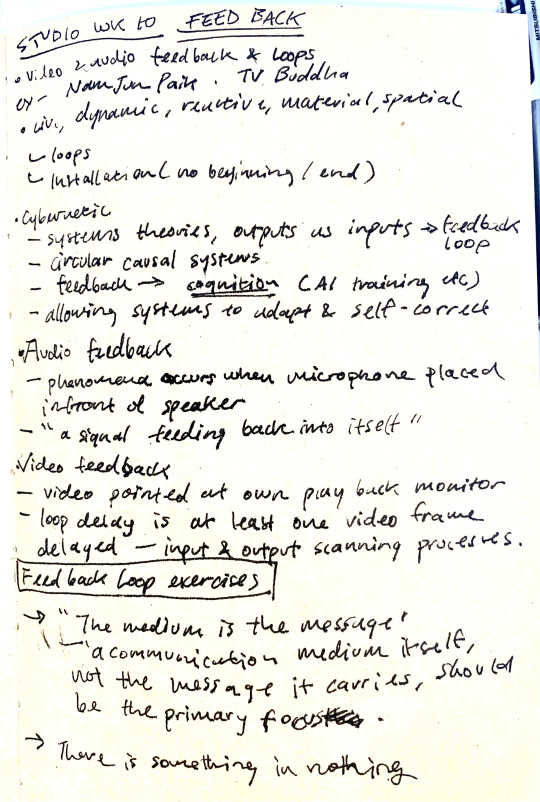
Audio feed back loop experiment:
Recreating Steve Reich's Pendulum Music 1968
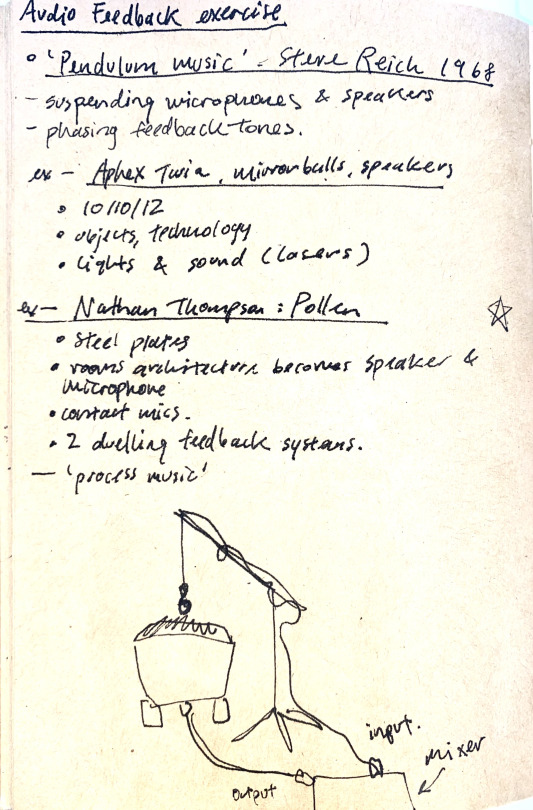

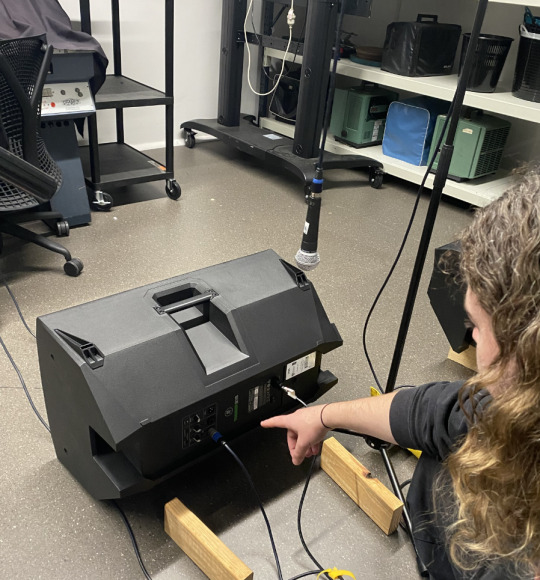
Video feedback loop tests
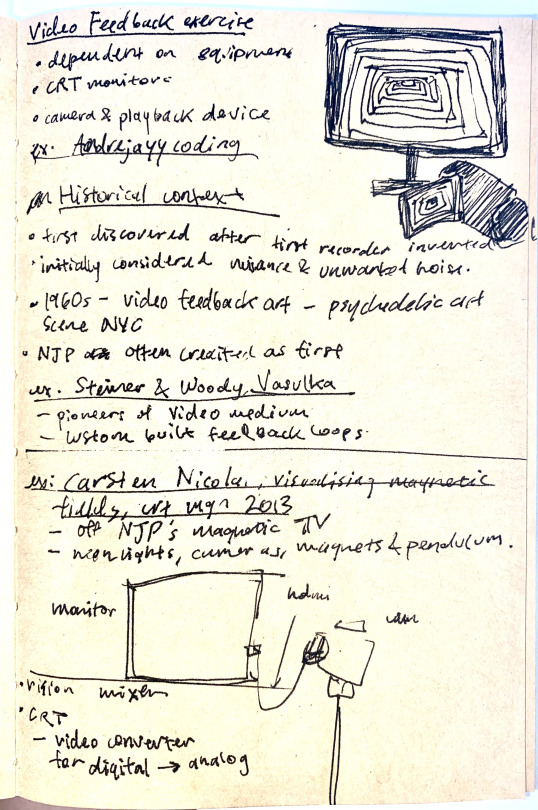
Digital! The! di the camera. and monitor.
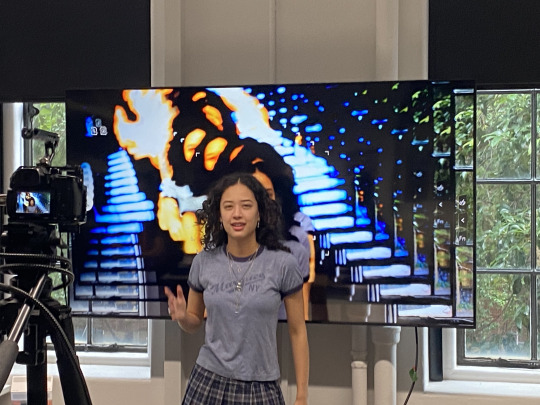
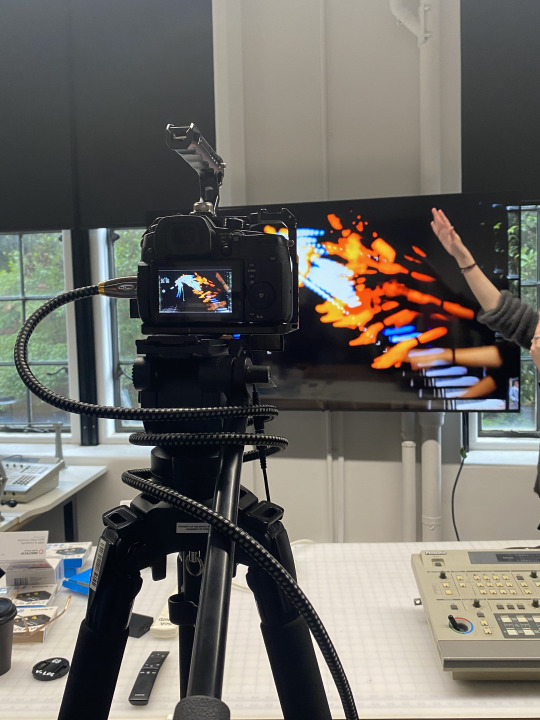
Analgo. Analgo. Analog. Analog./ Alanog

youtube
Blue check :D blue check. bluc chek. saturation brightness
1 note
·
View note
Text
Groval Euler’s- Retail Sales Transformation Project For A Health And Wellness Company

The retail sales landscape is constantly changing, with growing expectations of both B2B and B2C consumers. We had the mandate to build the sales capabilities of a young sales team working through a B2C model to sell health, nutrition and wellness services. A long-term roadmap was drawn to make the transformation project. The scope of the Sales Team training and capability building are outlined below Learn More:- https://grovaleulers.com/groval-eulers-retail-sales-transformation-project-for-a-health-and-wellness-company/
#Value selling#RetailSales#SalesTransformation#B2B#B2C#SalesCapabilities#TrainingAndDevelopment#ProductKnowledge#ValueSelling#CustomerCentricApproach#DataAnalytics#BrandPositioning#TrustBuilding#Adaptability#ContinuousImprovement#GoalSetting#FeedbackLoops#CrossFunctionalCollaboration#ConsumerExpectations#IndustryTrends
0 notes